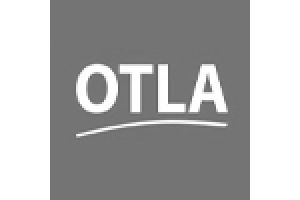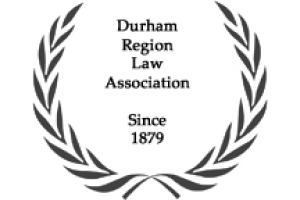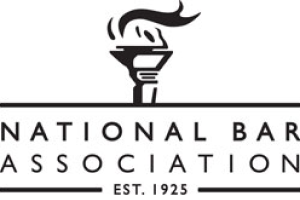Dresser Industries Incorporated

The Dresser™ logo as pictured was registered with the Canadian Trademark office in 1969.
Tracking Dresser Industries product lines and subsidiaries is daunting. The Company merged, purchased and was itself bought by other companies throughout its history so that ensuring that Dresser divisions and products are correctly named is a challenge.
Dresser started as the S. R. Dresser Manufacturing Company and did not become Dresser Industries until 1956 when a merger with Clark Bros. Company was formally completed.
The asbestos trust that covers Dresser products is called the DII Industries LLC Asbestos PI trust. Once you are working within the trust there is a distinction between Halliburton and Harbison Walker products. Dresser falls under Halliburton. Halliburton was caught holding the bag when asbestos liability caught up with Dresser Industries and it was the Halliburton Company that funded the DII trust.
Dresser got its start when founder Solomon Dresser took out a patent for his revolutionary Dresser Cap Packer in 1880 for use in the oilfield business. Only five years later, in 1885, he patented a second invention, a flexible coupling which he named a Dresser Joint. The Dresser Joint enabled pipes to be joined with a rubber joint such that it could carry natural gas without leaking. This joint was so successful that it enabled long range transmission of natural gas from the gas fields to the customers in cities.
The first Dresser Joints were sold for use in the natural gas business in Alberta in 1917. Using the Dresser joint, the natural gas industry flourished. This in turn grew Dresser’s company and by his death, in 1927, sales reached $3.7 million US dollars.
1928 not only saw the company becoming a publicly traded company but elect a new president, Neil Mallon. Mallon believed that Dressers core business was threatened by the popularity of welded joints and to keep Dresser competitive it was necessary to embark upon a program to acquire marketable additions to the Dresser product line. Starting in 1930 Dresser started buying companies that made other oil field and natural gas industry products including pumps, compressors, drill bits, refractories, drilling muds and valves. Clark Bros. (compressors) Company, became associated with Dresser during this period.
The Canadian government, alarmed by the goods flowing into Canada from the USA threatening Canadian manufacturing, decided to impose taxes to restrict imports. This caused Dresser Industries to find a way around the situation. A Canadian subsidiary, the Dresser Manufacturing Company, Ltd., was incorporated and a new manufacturing facility opened in Toronto in 1931 to supply the Canadian market.
Dresser Clark was instrumental in the success of the allied victory in WWII, including designing and building engines for “Liberty” ships, tugboats and tankers. They built compressors and engines for other industry war effort work and were acknowledged with many awards by the US government. Use of asbestos was not only encouraged, but mandated, when building military equipment and Navy vessels.
Following the war, Dresser moved its headquarters to Dallas, Texas in 1950, where all the big oil and gas companies had their headquarters. To stay ahead of their competition, Dresser continued to purchase businesses that they believed complimented their product line.
Dresser chose the State of Delaware to re-incorporate as Dresser Industries Inc. in 1956 when they fully absorbed Clark Bros. Company. Delaware has laws favourable to business and many US corporations have taken advantage of that fact. More that half of publicly traded companies are incorporated in Delaware.
Continuing to expand, Dresser merged with the Wayne Oil Tank and Pump Company in 1968 and became known as the Dresser-Wayne Company. They acquired Gallion Iron Works and Jeffrey Manufacturing Company Inc. in 1974, and International Harvester’s construction equipment in 1978.
Dresser-Rand
In Dresser’s most significant move yet, Dresser Industries merged with Ingersoll-Rand in January of 1987. The companies started with equal ownership, but Dresser took a 51% position shortly after the merger. This venture was called the Dresser-Rand Group and was headquartered in Corning, New York. The new group had over 7000 employees spread over 10 manufacturing facilities, 30 service centers and 70 sales offices across North America.
Rapid growth saw Dresser expand to employ more that 31,500 people by 1993, with their operations spread over fifty countries. At that time Dresser maintained three core divisions: Oil Field Products, Industrial Operations and Energy Processing and Conversion Equipment. Throughout this period Dresser incorporated and sold off some of its manufacturing divisions, but by contractual agreement with the purchasers of those divisions specifically agreed to retain any asbestos liability associated with those product lines.
Halliburton
Dresser Industries primary rival in the oil and gas business was Halliburton. Dresser-Rand, the parent company of Dresser Industries, merged with Halliburton in September of 1998 in a 7.7-billion-dollar deal negotiated by Dick Cherney. Following the merger, the company became the Halliburton Company.
With the merger, Halliburton was burdened with Dresser-Rand’s liability for asbestos claims for Dresser and all its other subsidiary companies. Facing a large Judgment ($130 million) from an action brought by numerous plaintiffs in Texas (Bell v Dresser Industries) in 2001 Halliburton stocks started to nosedive. A second $80 million award against the company made management at the company realize that Halliburton could not withstand the barrage of claims that were already filed against them and they started contemplating bankruptcy.
Simultaneously, Harbison Walker, also a member of the Halliburton family as they were a Dresser subsidiary when Halliburton purchased Dresser, sought bankruptcy protection. This caused more even more claimants to sue Halliburton in an effort to obtain compensation.
Negotiations with plaintiffs’ lawyers and a future claimants committee resulted in a deal in late 2003. The Company sought confirmation of the deal from claimants who had until November 3, 2003 to vote on the plan. The vote passed with 97% of asbestos claimants and 99% of silica claimants agreeing that 4.5 Billion was enough to fund a trust to review and pay claims by those affected by Dresser Industries, Worthington, Clark, Kellogg Brown & Root and Harbison Walker asbestos liability.
With the negotiations completed, Halliburton filed for Chapter 11 protection for the Dresser divisions in the bankruptcy court in Pittsburgh, PA, on December 16, 2003. With lightning speed, the plan was approved by the court on July 21, 2004, and final orders were issued December 1, 2004.
This means that all asbestos claims against Halliburton affiliate Dresser Industries, Inc. as well as Harbison-Walker Refractories Company, Kellogg Brown & Root, Inc. and others are channeled to the trust so that all persons will be compensated equally, fairly and quickly. It is the intention of the trust to pay out all its assets to claimants by going back and topping up claim payments if and when the volume of new claims declines.
If you are suffering from asbestos disease caused or contributed by exposure to a Dresser Industries product, please contact us to discuss making a claim for compensation to the DII asbestos personal injury compensation trust. Consultations are always free.








